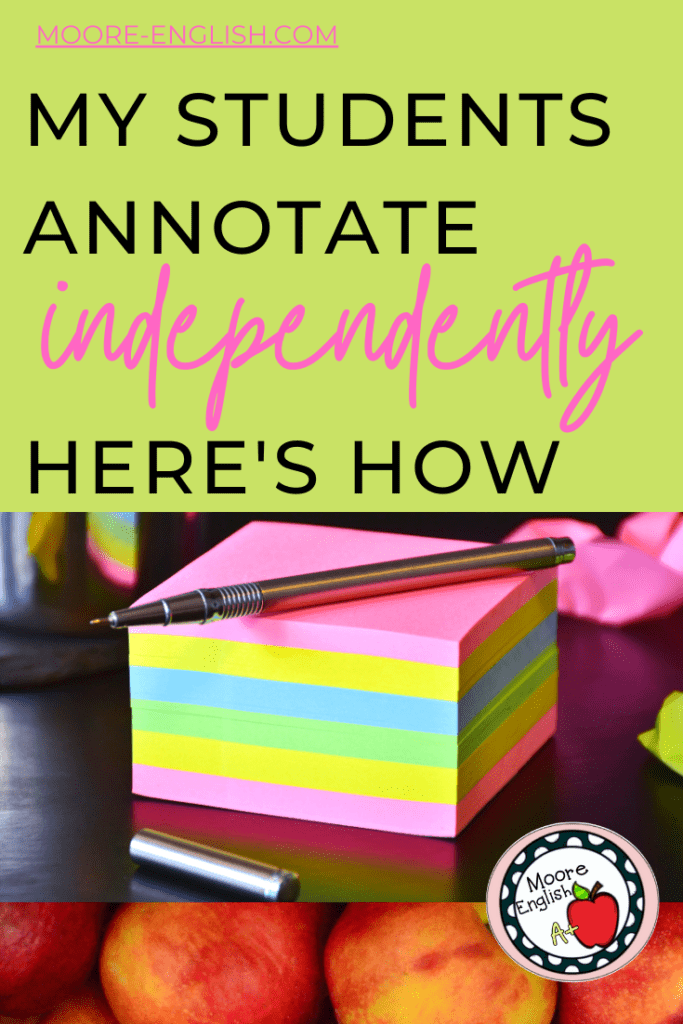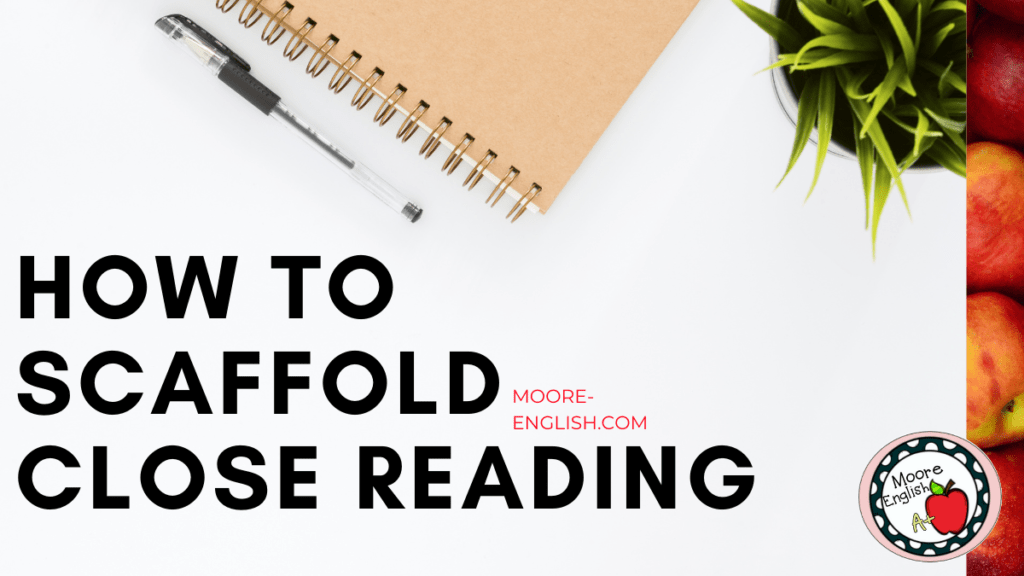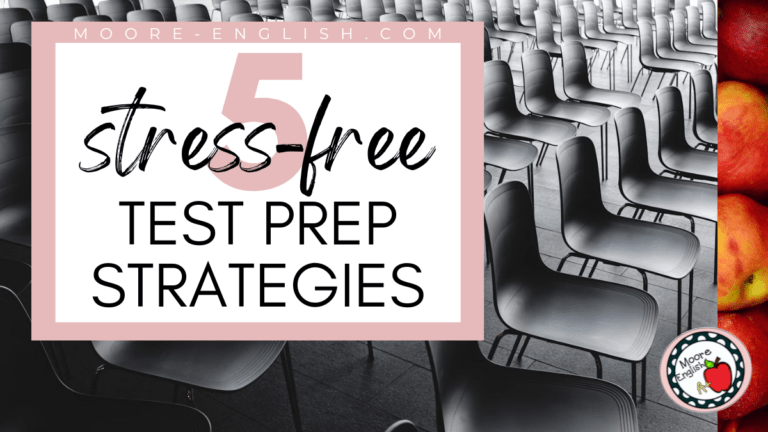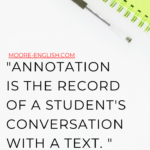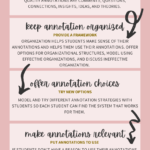For the last few years, I have mostly taught sophomores. Tenth grade is kind of my sweet spot: the students are young enough to be unironically enthusiastic, but they don’t follow me around the classroom like freshmen ducklings. It’s also an age when students are deciding who they are and what they believe, and they’re trying to square their thoughts and beliefs with how they have been raised.
Reading is one of the best ways to test your beliefs, to strike them against an author or character’s words and see if there are sparks. Helping my students through this process is one of the best parts of my job. Because I believe reading is a conversation, it’s important to help students engage texts in a meaningful way.
Annotation is the record of a students’ conversation with a text. As sophomores, my students usually have some previous experience with annotation, but they are not independent in that skill. Because annotation is so valuable, one of my year-long goals is to help my students become independent in making annotations.
However, my students aren’t always excited about annotation and close reading. For this reason, I have developed 5 Commandments of Teaching Annotation.
This post this post may contain affiliate links. Please read the Terms of Use.
5 Commandments of Teaching Annotation
Firstly, annotation has to be focused and meaningful. A quality annotation is rarely “Hot damn” or “I like the color red, too.” Instead, students focus on annotations that look like insights, connections, and/or questions. I model this heavily.
Secondly, annotations have to be organized. Although my students would be loathe to admit it, organization helps them make sense of their annotations and helps them use their annotations.
Thirdly, annotations need to scaffold toward independence. This is where students begin to see the value of organization.
Fourthly, annotations require a certain amount of freedom and choice. One of the goals of my scaffolding spiral is to slowly move students to a place where they have the independence and freedom to develop an annotation system that meets their needs.
Finally, annotations have to be immediately useful, meaningful, and relevant. If students don’t have a reason to use their annotations, they’re not going to understand the value. Create opportunities for students to use their annotations in assessment, in discussion, and in writing!
Scaffolding Annotation
With sophomores, I spend a lot of time scaffolding annotation, slowly working them to a place where they are independently annotating.
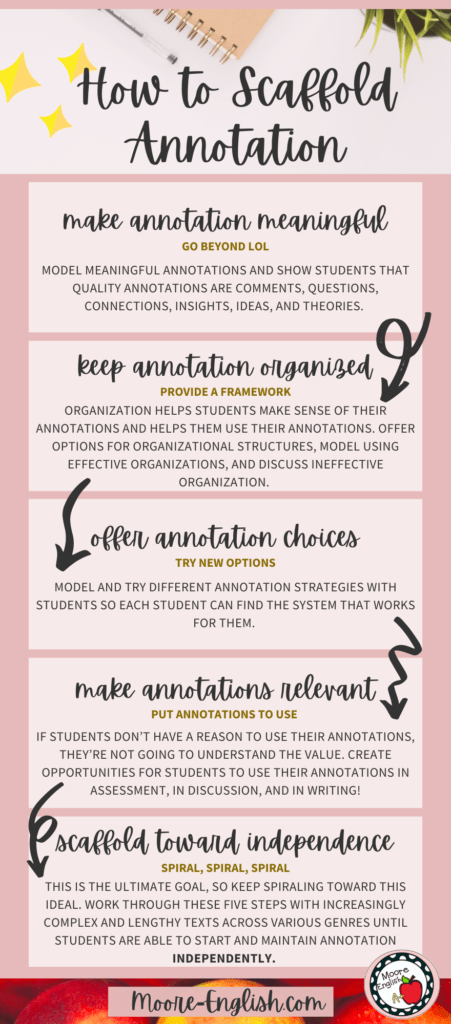
I begin this process with guided reading, focusing on teaching students the 4 Steps to Annotation ANY Poem and the 4 Steps to Annotate Nonfiction. These similar processes help any student attack any piece of text. We reference these processes all year long. My students are taking their state assessment next week. While I’m no fan of standardized assessment, I am confident that my students will have success because they have these two processes down.
In our second unit, we read a class novel. Early on in the unit, I explain to students that one of our goals is developing independent annotation skills. Regardless of what book we read, we usually end up with about 12 sections of reading.
From here, I explain to students that we are going to try 3-4 different annotation strategies, giving each one at least two tries. After students have tried all the strategies, they finish the book by using whatever strategy they choose. This system of gradual release has worked very well.
When I select annotation strategies, I move students from the most structured strategy to the least structured strategy. In this way, students learn the importance of organizing annotations, see and experience a teacher-designed organizational strategy, and have the opportunity to develop their own organizational strategy.
Here’s the spiral I used this year:
- Firstly, students started with 5 Square Annotations. This is a very organized and heavily structured annotation system. I use these free note sheets, or students fold a sheet of notebook paper into fourths. In the margin, they make a prediction; in the first box, they record 2 connections to the text; then, in the second box, they record 3 questions they had while reading; finally, in the fourth box, they write down 2 meaningful quotations; and in the final box, they summarize the section they just read. I also call these notes 1-2-3-2-1 notes, which is easy for students to remember so they can duplicate this process with their own annotations. There are countless variations on these notes, and my favorites are included in this freebie!
- Secondly, students try free notes. Basically, students take a sheet of notebook paper and have to fill it while they read. This sounds like it would be unbridled chaos, and sometimes it is. When we reflect on this process, students often say they didn’t understand the importance of organization until they were without it. To help, I model my free notes process, which is a combination of outlines and arrows.
- Thirdly, students try using sticky notes. Some students like the immediacy of sticky notes while others find the process to chaotic. Some hate the way the sticky notes poke out of the book or obscure the words on the page. Of the strategies we try, this one has the least structure and organization, which some students love but others hate.
How do you make annotation meaningful for your students?

